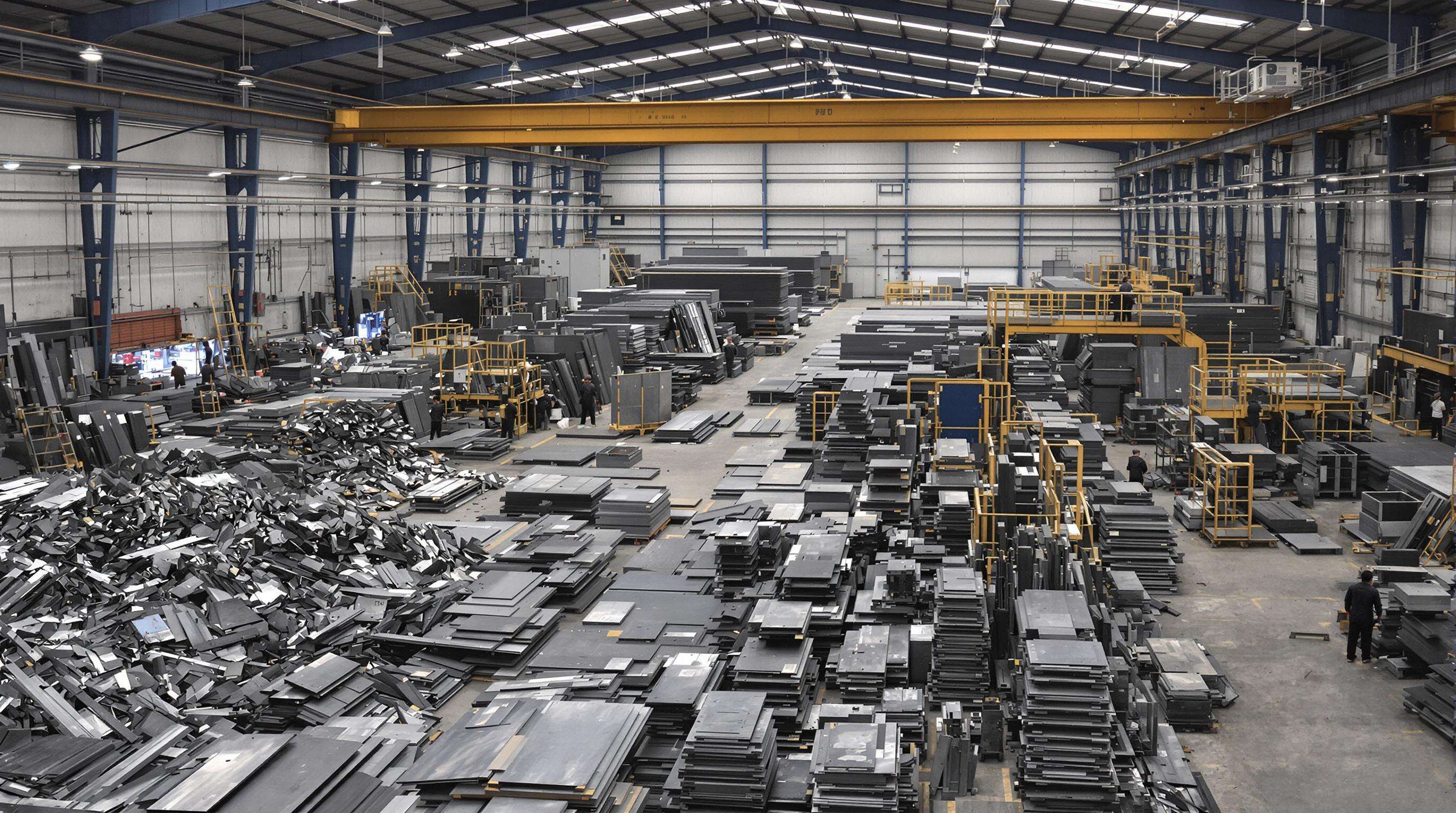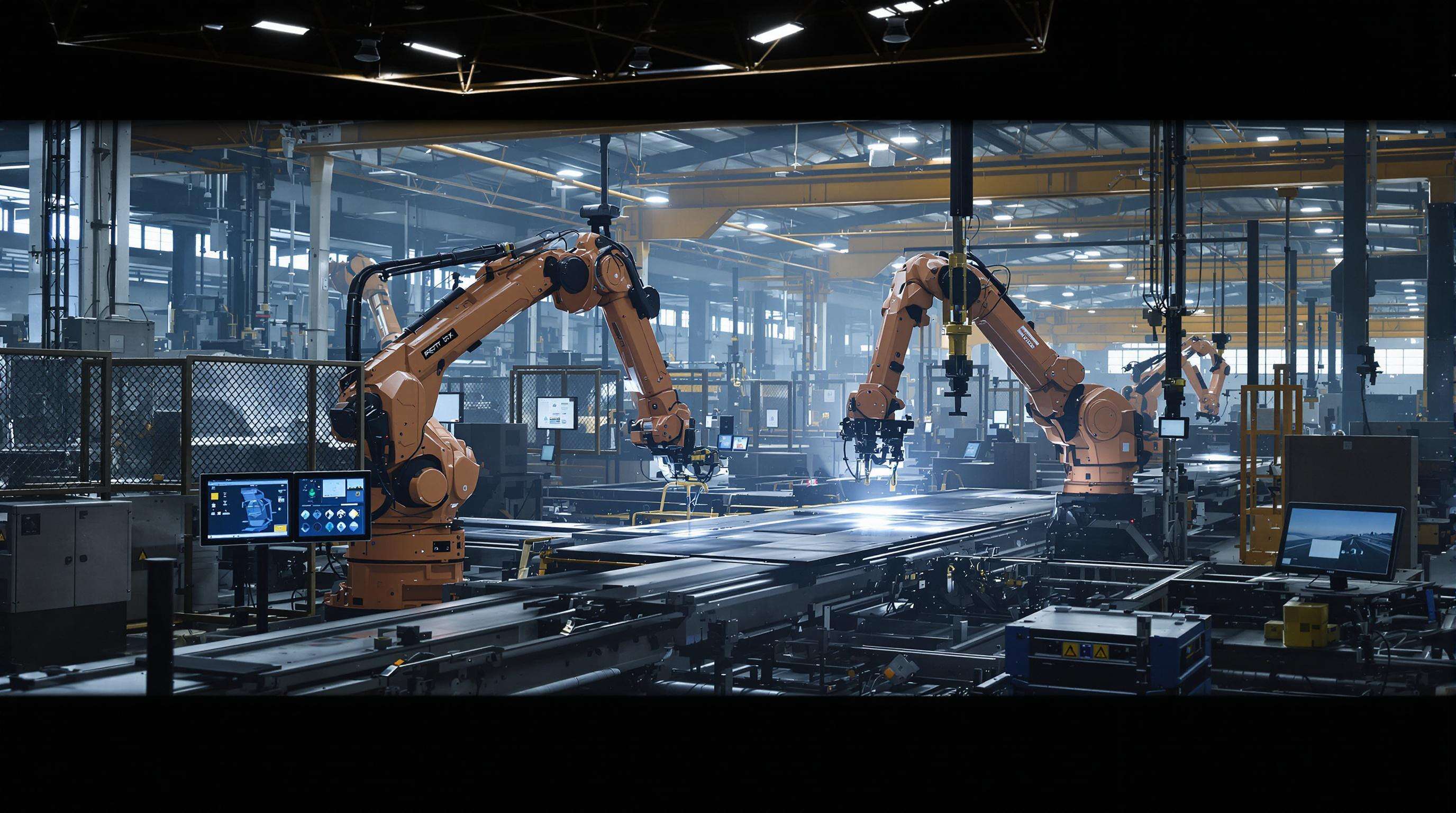Understanding Waste in Steel Workshop Operations

Common Waste Streams in Steel Workshop Environments
Steel workshops generate three primary types of waste:
- Material waste: Up to 20% of raw steel becomes scrap due to inefficient nesting or cutting errors (Fabrication Efficiency Report 2024)
- Time waste: Poor workflow design leads to 12–18% productivity loss from machine downtime and excessive material handling
- Labor waste: Rework caused by measurement inaccuracies consumes 8% of operational hours
Key Causes of Material Loss: Cutting Inefficiencies and Scrap Generation
Thermal cutting processes like plasma or laser account for 65% of material waste when outdated software fails to optimize sheet layouts. Manual nesting errors further increase scrap, while automated nesting systems reduce offcuts by 34% compared to traditional methods.
Impact of Human Error and Outdated Workflows on Process Waste
Legacy workflows without digital documentation result in 27% more measurement errors than standardized systems. A 2024 analysis of 47 workshops found that paper-based tracking led to 15% higher scrap volumes than real-time monitoring tools. Inadequate cross-training in multi-machine environments also contributes to avoidable material loss.
Lean Manufacturing Principles for Steel Workshop Optimization
Applying 5S, JIT, and Value Stream Mapping in Steel Fabrication
Workshops implementing lean principles achieve 12–18% faster production cycles using the 5S methodology (Sort, Set, Shine, Standardize, Sustain). Value stream mapping reduced material handling time by 34% across 47 facilities by eliminating redundant steps. Just-In-Time (JIT) production complements these efforts by aligning raw material deliveries with project schedules, reducing idle inventory.
Reducing Inventory Waste Through Just-In-Time Production
JIT strategies cut excess inventory by 19–27% in steel workshops (2023 metal fabrication data). Success depends on:
- Real-time tracking of material consumption
- Strategic partnerships with local suppliers
- Buffer stock optimization for high-demand alloys
Facilities combining JIT with digital inventory systems report 22% fewer delays due to material shortages.
Identifying Non-Value-Added Activities With Value Stream Analysis
Value stream mapping identifies three major sources of inefficiency in steel operations:
| Waste Category | % Impact on Efficiency |
|---|---|
| Overprocessing | 31% |
| Machine recalibration | 28% |
| Manual quality checks | 24% |
Automated data collection reclaims 140–210 annual production hours previously lost to these activities.
Fostering a Culture of Continuous Improvement (Kaizen) in Steel Operations
Daily kaizen meetings reduce process deviations by 41% in workshops tracking employee-led improvements. Cross-functional teams analyzing quarterly performance achieve 15–20% annual efficiency gains through incremental adjustments. Facilities with structured improvement programs see 27% higher retention in technical roles compared to industry averages.
Digital Transformation and Automation in Modern Steel Workshops

Case Study: Digitalization in a European Steel Fabrication Plant
A European steel fabrication plant reduced material waste by 23% through full digitalization. Cloud-based monitoring and AI-driven pattern optimization achieved 98.6% material utilization in 2025–15% above industry averages. IoT sensors enabled real-time equipment tracking, identifying bottlenecks in plasma cutting and allowing rapid workflow adjustments.
Smart Nesting and Material Optimization Software for Waste Reduction
Advanced nesting algorithms optimize steel sheet layouts with 0.5mm precision, minimizing kerf loss in thermal cutting. This technology prevents $740,000 in annual scrap costs for mid-sized workshops (Ponemon 2023). Material optimization platforms adjust designs to available stock dimensions, reducing remnant steel by up to 40%.
Automation, Robotics, and Smart Material Handling to Minimize Downtime
Modern workshops deploy autonomous robotic cranes that coordinate raw material delivery with 42% fewer handling errors than manual systems (2025 case study). Automated storage and retrieval systems maintain 99% inventory accuracy and reduce material search time by 85%.
Predictive Maintenance and Equipment Calibration for Consistent Quality
AI-powered vibration analysis predicts laser cutter bearing failures 72 hours in advance, preventing $18,000/hour production stoppages. Automated calibration keeps plasma torch alignment within 0.01mm tolerances, reducing scrapped components from dimensional errors by 91% compared to manual setups.
Key Performance Indicators: Tracking Scrap Rate, Rework, and Yield Efficiency
The best steel shops keep their eyes on three main numbers when it comes to performance: how much scrap they generate, how often they have to redo work, and what their overall yield looks like. Most standard operations end up with somewhere between 5 and 15 percent scrap material, but the top performers manage to get this down under 3 percent thanks to systems that track everything as it happens. When shops start using predictive analytics instead of relying solely on people checking for problems, they tend to see around a 40 percent drop in needing to fix things twice. Facilities that implement sophisticated nesting software typically hit yield efficiencies of 92 to 95 percent. These improvements show just how much difference good data can make in cutting down on wasted materials across the industry.
Design and Process Optimization to Reduce Waste at the Source
AI-powered design simulations minimize material surplus in component blueprints. Parametric modeling reduces raw steel requirements by 18% in structural projects (2024 industry analysis). Modular design frameworks, combined with laser-guided alignment, enable 98% material utilization in panel cutting operations.
Adopting Innovation and Emerging Technologies for Long-Term Efficiency
Forward-thinking workshops are adopting:
- Microwave-based scanners that detect subsurface flaws before cutting
- Machine learning algorithms optimizing production schedules by material batch
- IoT-enabled bins that track scrap composition for automated recycling routing
Facilities with full digital integration report 22% higher production efficiency, according to recent manufacturing surveys.
Supporting Eco-Friendly Practices and the Shift Toward Sustainable Steel Production
Circular economy initiatives recover 97% of workshop scrap through closed-loop partnerships with electric arc furnace mills. When combined with renewable energy-powered equipment, these practices reduce carbon emissions per ton of steel processed by 34% since 2020. Such initiatives support global decarbonization goals and lower material costs by 12–15% annually through waste reclamation.
Frequently Asked Questions
What are the common types of waste produced in a steel workshop?
Steel workshops commonly produce material waste, time waste, and labor waste due to inefficient processes and errors.
How can lean manufacturing principles help reduce waste in steel workshops?
Lean manufacturing principles like 5S, JIT, and value stream mapping can significantly reduce material handling time, excess inventory, and non-value-added activities, enhancing overall efficiency.
What role does digital transformation play in modern steel workshops?
Digital transformation in steel workshops includes the integration of AI, IoT, and automation technologies to optimize processes, improve material utilization, and minimize waste.
How does predictive maintenance contribute to waste reduction?
Predictive maintenance helps anticipate equipment failures, preventing unexpected downtime and reducing the incidence of scrapped components caused by misalignment or breakdowns.
Table of Contents
- Understanding Waste in Steel Workshop Operations
- Lean Manufacturing Principles for Steel Workshop Optimization
- Digital Transformation and Automation in Modern Steel Workshops
- Key Performance Indicators: Tracking Scrap Rate, Rework, and Yield Efficiency
- Design and Process Optimization to Reduce Waste at the Source
- Adopting Innovation and Emerging Technologies for Long-Term Efficiency
- Supporting Eco-Friendly Practices and the Shift Toward Sustainable Steel Production
- Frequently Asked Questions


